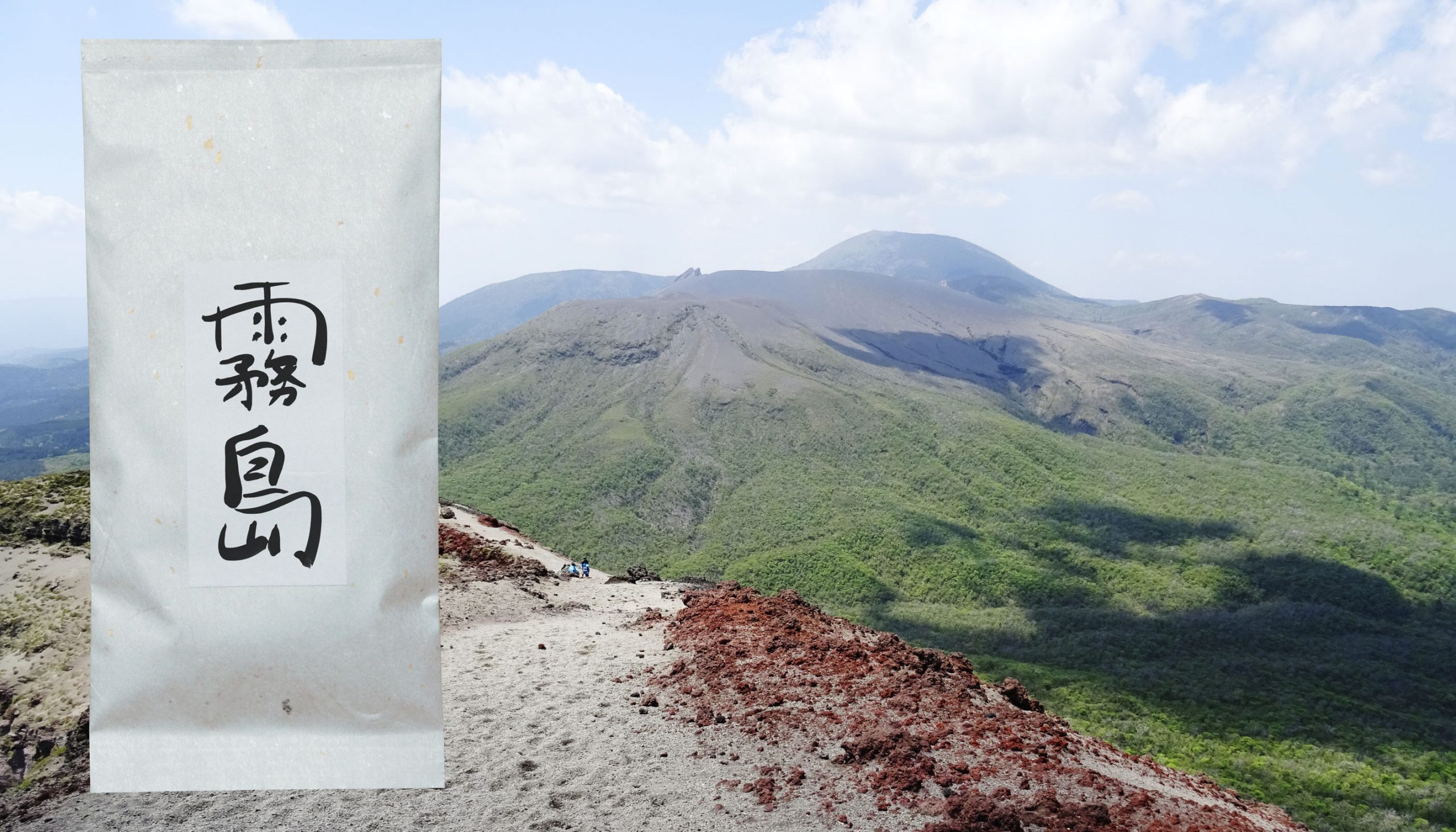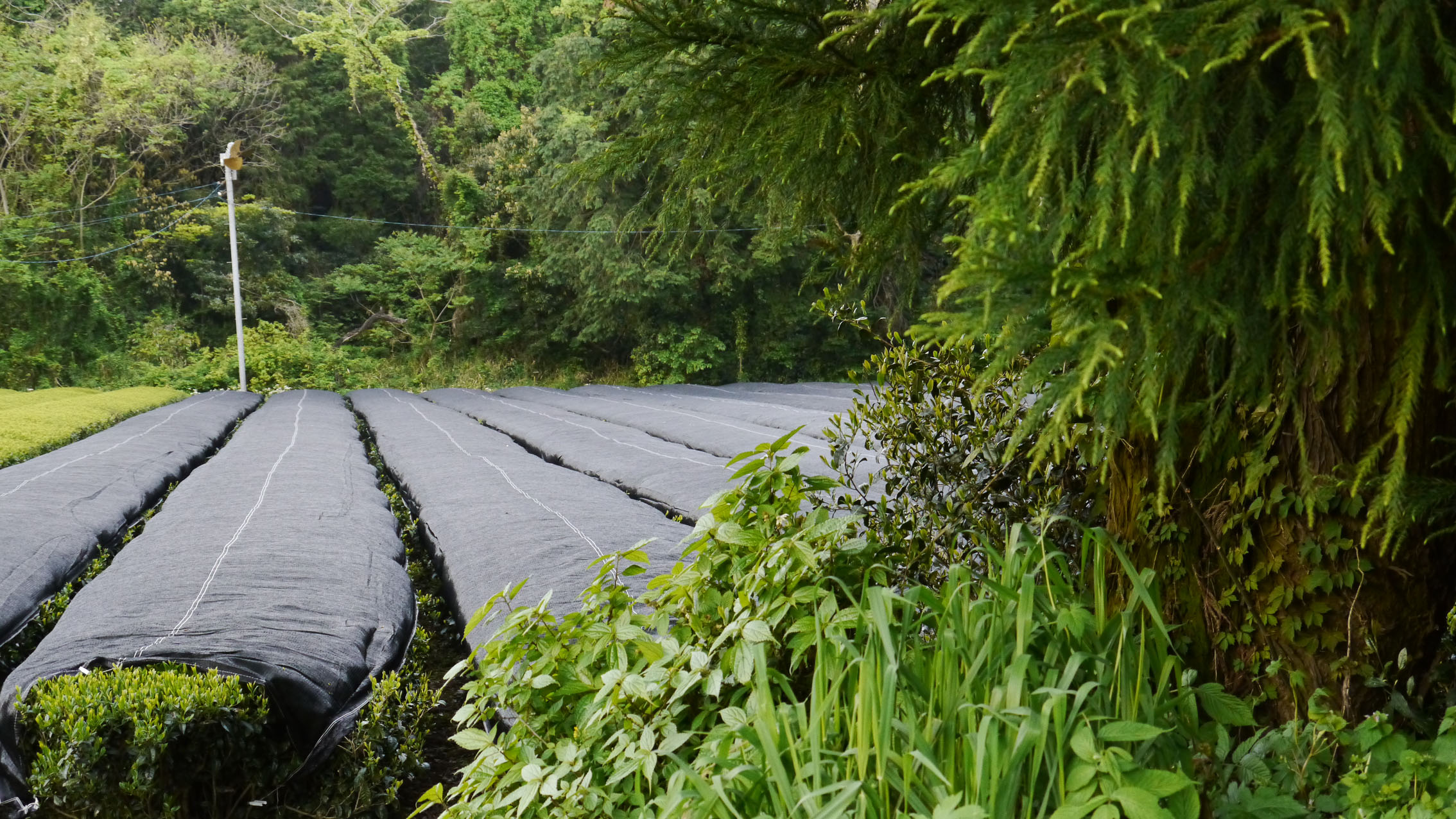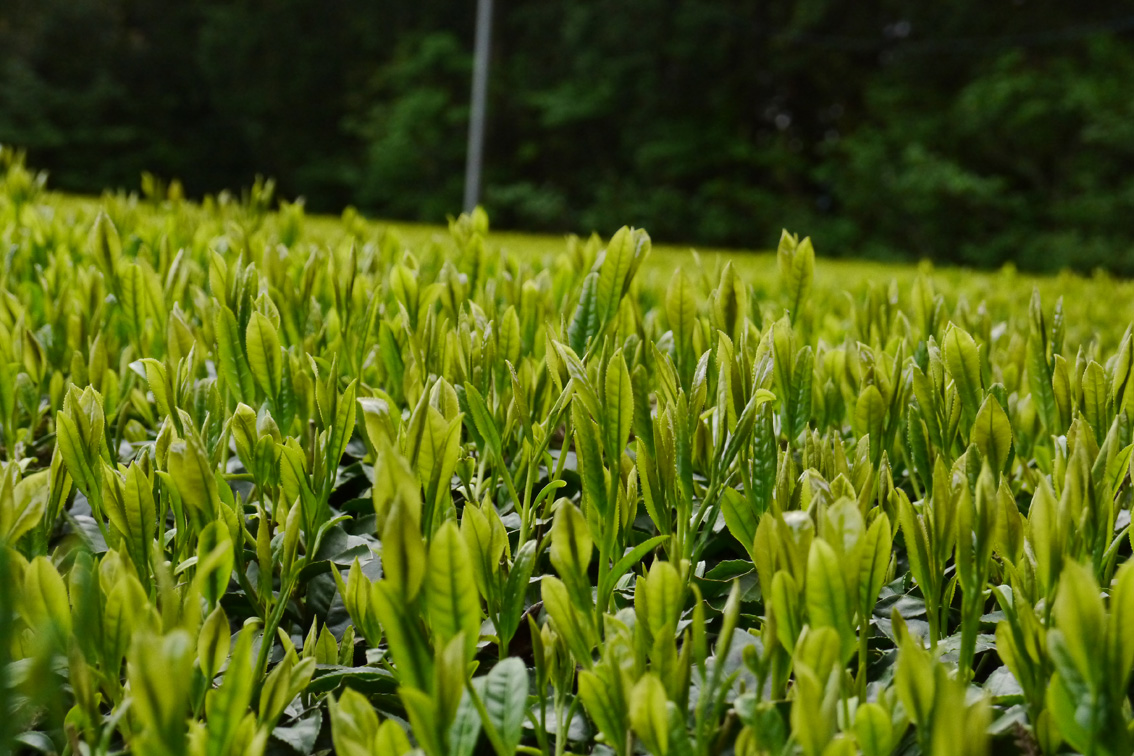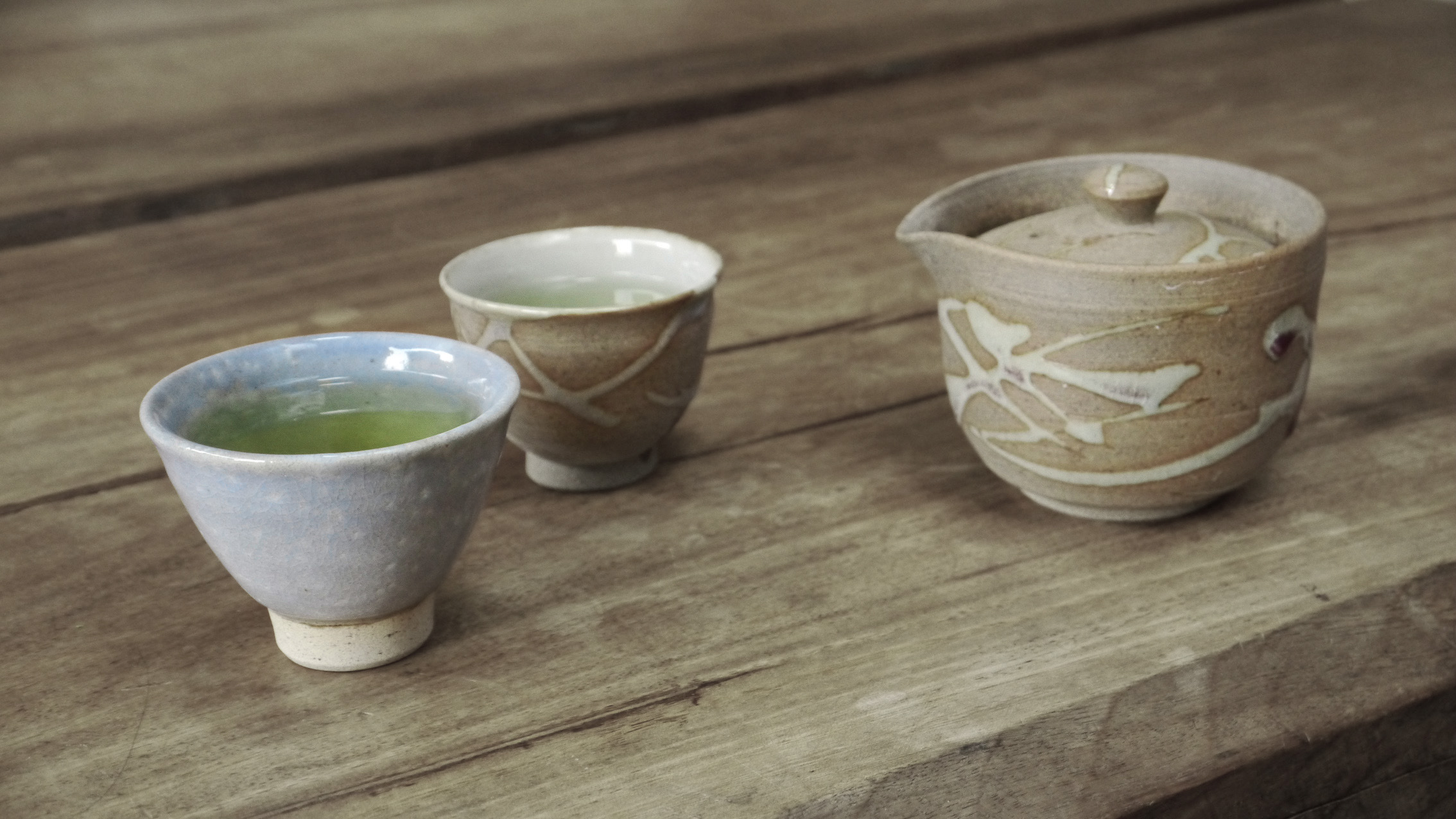
When we were visiting Shutaro Hayashi’s in Kirishima with european customers in the last years, we did get the opportunity to taste Shutaro’s Kirishima Aracha Shincha several times. However, it was not a matter of the same tea bush varieties every time. In 2016, for example, it was the variety Asanoka, that Shutaro Hayashi used for his Kirishima Aracha Shincha. Our customer’s feedback was always great, if we tasted the Aracha Shincha on-site at Shutaro’s. Thus, we repeatedly received the proposal from our customers, to import Shutaro’s Aracha Shincha, so that it could be provided in relevant specialised te shops.
However, Shutaro Hayashi had been equally unsure as we had been at that time, if it were wise to provide an Aracha Shincha in Europe. The background for these concerns was the fact, that because of the deliberately not undertaken final processing to keep the unbelievable freshness of the tea leaves, the leaves are not that much stabilised, since they contain still more humidity. Deep freezed, it would not play a significant role, if the leave material had final processing or not. But as higher the temperature, the more final heating [hi-ire] is acquired to guarantee a stable taste over a time of period such as half a year or a whole year. But both during the transport to our customers in Europe and in most of the specialised tea shops, the tea would not be cooled. Would it thus be possible to obtain the pure and fresh taste of the Kirishima Aracha Shincha until it gets to the people, who want to enjoy it?
With this concerns as background, we did not order the Kirishima Aracha Shincha in the years 2015 and 2016. As the “true taste” of such an Aracha Shincha comes into it’s own only in the first weeks to maximum three months, it would have to get extremly fast from Kirishima to the European tea shops. If the tea is sold directly in Japan and drunk by Shincha fans on-site, that should be an entirely adequate amount of time. But until the tea reached Europe and could be distributed to the specialised tea shops, several weeks would have passed according to experience. However, we kept on thinking…

When Shutaro Hayashi came for a visit to Germany and France in spring 2017, in order to perform some tastings at several specialised tea shops, which value his tea, we talked again about the Kirishima Aracha Shincha. We had gotten several samples of Aracha from an other tea garden in 2016, which we tried some months later. We realized, that the quality had not changed as heavily as we had anticipated. Additionally, we had the thought to work with a very small amount, that Shutaro would produce especially for us. This small amount could be transported by us via our luggage when we returned from our trip through Japan, so as to keep the leaves as fresh as possible and to be able to provide them in Europe as quickly as possible. So we talked about our idea with Shutaro in march 2007 and he was instantly excited.
Now we simply had to settle, how precisely the KIRISHIMA ARACHA SHINCHA 2017 should be produced. An other subject to be cleared was, out of which tea bush variety this tea should be made. As Shutaro’s preferences lie with the two tea bush varietals Asatsuyu and Asanoka at the moment, he instantly proposed to use one of these two tea bush varieties for the Kirishima Shincha. When we met at his tea garden the last days in April 2017, Shutaro Hayashi showed us the tea bushes of the variety Asanoka, which he planted in his tea garden several years ago, next to the small building, where he processes his tea. As compared to the year 2013, when we had seen these Asanoka bushes the first time, they have grown substantially since and you can see, that they feel very comfortable at Shutaro’s. However, Shutaro’s Asanoka bushes are still too young and sensible to be shaded, which you can see by the fact, that they have not yet grown together as a row. Until they are ready, surely one or two years will pass. Hence the “KIRISHIMA ARACHA SHINCHA” should be processed from shaded bushes [kabuse sabai] according to Shutaro, the Asanoka is still out of question this year.

Concerning the tea bush varietal for the KIRISHIMA ARACHA SHINCHA 2017, Shutaro decided to use the leaves from the varietal Asatsuyu. Though, like marginally mentioned before, there is more to say about these selected Asatsuyu bushes. The sort “Tennen Gyokuro” produced by Shutaro Hayashi out of the varietal Asatsuyu, comes from leaves of Asatsuyu bushes in his tea garden, which were really cultivated from cuttings of the tea bush cultivar Asatsuyu. That is, it is a question of tea bushes, that have been cultivated from cuttings of a Asatsuyu bush and are by that identical from a genetical perspective. Concerning the leaves from the cultivar Asatsuyu for the KIRISHIMA ARACHA SHINCHA 2017, the process is different.

If you look at the picture we took shortly after the 20th April in Shutaro Hyashi’s tea garden in Kirishima, there are three chraracteristics that come to the eye, indicating, that it is about Asatsuyu tea bushes: First, the leaves are relatively small and thin. Second, the colour of the leaves is a beautiful glowing green. Though, considering these characteristics, it could still be some other bush varieties’ leaves. But the third characteristic points very clearly towards Asatsuyu bushes, for the really young and small leaves are coloured slightly red at the upwards growing tips. This is a very specific characteristic of the Asatsuyu tea bush varietal. If you shade the Asatsuyu bushes like Shutaro did during the last days, however, the redish tips vanish and change completely into a intensiv light green. But what is the difference between the Asatsuyu bushes used for Tennen Gyokuro and the Asatsuyu bushes Shutaro uses this year for the KIRISHIMA ARACHA SHINCHA?
On the picture above you can see, that the Asatsuyu tea bushes from this particular tea garden owned by Shutaro Hayashi, are not completely uniform. The bushes do not show such heavy differences like the bushes in a zarai garden, that is a tea garden containing bushes cultivated out of seeds with unknown parents. In these gardens, the tea bushes show great differences in growth and very different shapes, colours and sizes concerning the leaves. The Asatsuyu tea bushes from Shutaro Hayashi’s Mishou tea garden do not show the perfect uniformity of a single variety tea garden cultivated out of cuttings of a single tea bush variety. However, they are not either as diverse as the bushes in a zarai tea garden. Between the single bushes, there are only surprisingly little differences concerning the shape, colour and size of the leaves. Interestingly, the growth is largely consistent, so that the tea bushes in Shutaro’s Mishou tea garden have sprouted to nearly the same length. Like Shutaro says it short and pragmatic: “All in all, they are Asatsuyu bushes, also concerning their characteristic taste, however, it is not a pure Asatsuyu varietal. Thus, I call this tea garden “my special Asatsuyu varietal’s tea garden””. Presumambly, the point of time when the fresh sprouts grow is passed down from the mother’s side, because the mother of all of these plants is the tea varietal Asatsuyu.

(As we took the picture above already on 27th April 2017 and therfore still several days before the harvest of Kirishima Aracha in 2017, the tea used here is from the 2016 harvest.)
The question concerning what kind of a tea garden this one is, if it cannot be a single varietal Asatsuyu, but consists neither of zarai bushes, can be very simply answered: It consists of Mishou bushes of the varietal Asatsuyu and it is a tea garden cultivated from seeds. However, while a zarai tea garden is cultivated from seeds whose origin is unclear, this is not the case with these Mishou bushes. With Mishou bushes, the variety of the mother plant (egg cell) is definit, but the variety of the father plant (pollen) is unknown. For a Mishou tea garden, the seeds are being collected from a single tea bush variety. As the female blossoms from this bush are being pollinated with pollen from other bushes, the following generation shows many similarities, but because of the combination with different father plants, it shows some differences, too. The leaves Shutaro Hayashi uses for the KIRISHIMA ARACHA SHINCHA 2017 come therefore from Mishou bushes of the tea cultivar Asatsuyu. This means, that they are very similar to the single varietal Asatsuyu bushes concerning both formality and taste. But they do also have other nuances, which you can only find in Shutaro Hayashi’s Mishou Asutsuyu tea garden.
The KIRISHIMA ARACHA SHINCHA 2017 is thus not only a Shincha which is exciting for being available in the stadium of Aracha, but also because no one could produce such a Shincha. The Mishou Asatsuyu bushes in this particular form excists only in Shutaro Hayashi’s tea garden, since Mishou bushes are as unique like any child in this world, because of natur’s principles. The fact that Shutaro also shades his Mishou Asatsuyu bushes, gives this tea even more sweetness and umami, additionally to the freshness and sweetness which the cultivar Asatsuyu is already known for. The straight and pure flavour of the Aracha leaves which are not yet finally processed and therefore rather raw, make this tea clearly more exciting and guarantee a certain degree of shibumi, which gives this tea its natural character. And well, it is a tea which is produced by Shutaro Hayashi and bears thus his master’s signature.